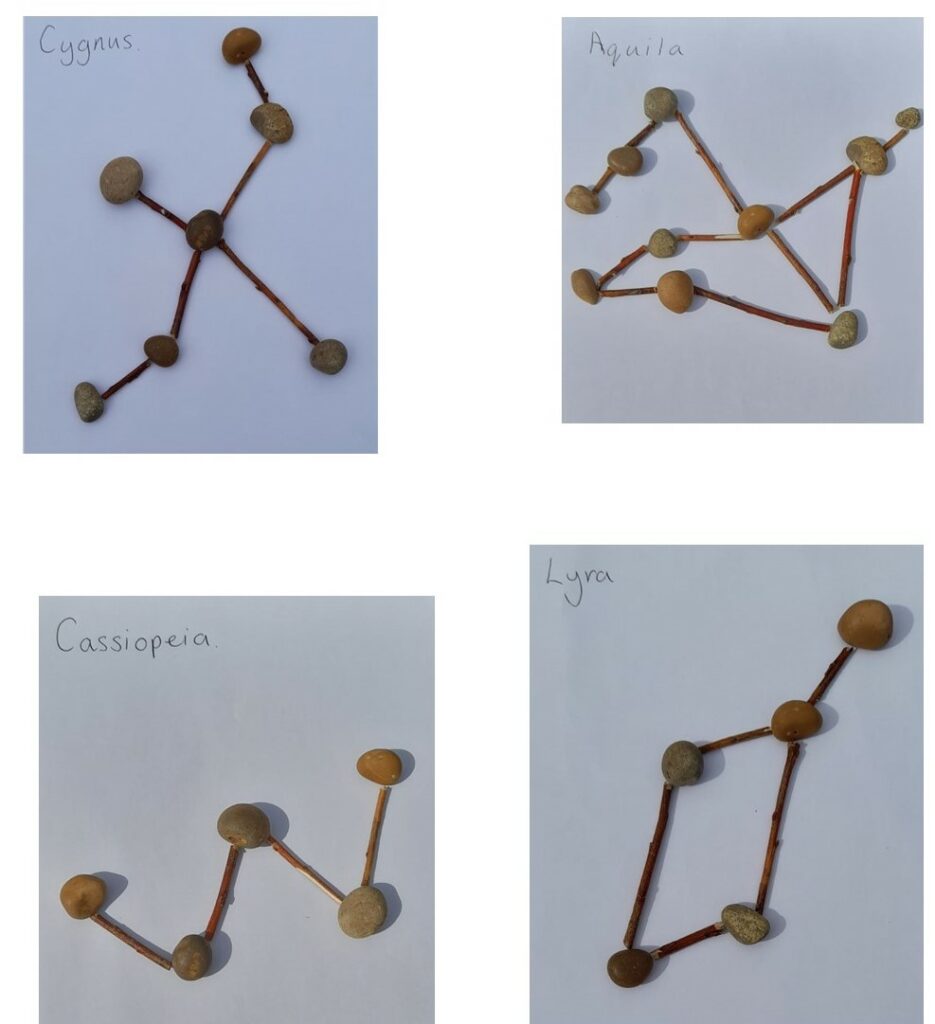Dusk sensory safari
During the day we use our 5 senses. As it gets darker our sense of sight is compromised but our other 4 senses work harder to make up for it. Smells seem to be stronger, and our sense of touch is more sensitive.
Why don’t you go out for a local dusk sensory safari? What will you hear, smell, touch and see? Will you hear the last birds making their way home to their nests? Will you see the first bats emerging from their roosts? Will you smell the night time pollinating plants filling the air with their fragrance? Will you hear the hoot of owls or the popping and clicking sounds of insects?
Why don’t you take some time to view the night sky? Find a dark spot and turn off any lights or touches. Leave some time for your eyes to adjust to the darkness. Enjoy viewing the night sky.
Creating constellations with natural materials

During your introduction to the Bannau Brycheiniog Dark Sky Reserve, you learnt about 4 constellations that we can see in the night sky at this time of the year. You learnt about Cassiopeia shaped like a ‘W’, Cygnus shaped like a swan flying, Lyra the harp and Aquila the eagle. Why don’t you go outside to find natural materials to re-create the shape of these 4 constellations?
You could use sticks, stones, pinecones, acorns or berries. This will help you to remember the shape of these constellations and will help you to find them in the night sky.
Planting for moths and bats
We all know how important it is to plant nectar rich plants for butterflies and insects but have you considered planting for the night shifters? Moths are attracted to certain flowers and plants that release their scent in the evening, which in turn attracts bats. You could spend some time planting Honeysuckle, Evening Primrose, Buddleia or Jasmine which are all rich in night time nectar. When pupils and staff go home the night shifters take over!
Did you know that the Bannau Brycheiniog National Park has one of the largest populations of the rare, Lesser Horseshoe bat and that the Sulurian moth, a rare and endangered species of moth was discovered as a result of moth surveys undertaken on the Black Mountains.